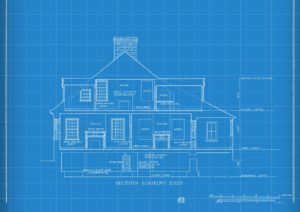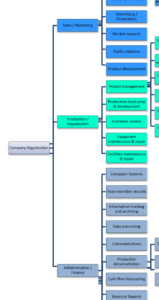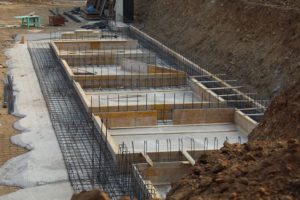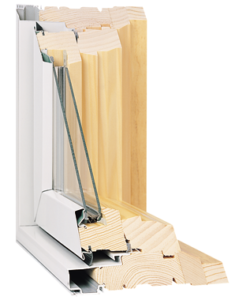Because It Isn’t Going to Magically Build Itself
For years people have asked me where I came up with the business system and procedures that I use. As I thought about it, I realized that my business and life had been developing for years without much intentionality.
After my accident in 2012 it caused me to think about what my life was and what I had expected it to be. Not that my life was terrible before, it just wasn’t what I had envisioned it to be. I had been living without a clear plan and there was so much more that I wanted to accomplish.
At that point I decided to become more intentional. I’ve always been a planner but it’s sad that it took a hit in the head for me to realize the  importance of being intentional about the plan.
importance of being intentional about the plan.
When we’re young the tendency is to think that we’ll have all the time we need. There’s no hurry to plan for the future…we’ll get around to that someday. Then one day we wake up and realize life is flying by and we haven’t done all those things we wanted to.
You don’t have to wait until you’re smacked in the head to become intentional.
While explaining my business operating system to my team, it became evident that even though I now have an intentional plan, it needed to be written down. When working alone, I would just do the next thing that needed done. I didn’t need a written plan, so I thought. Not only do I need a written plan to communicate to my team, but it helps me to be clearer.
 Think of your life or business as a construction project. It all begins with a dream. You can see the vision of the completed project in your mind. The tricky part is getting that dream out of your head and making it a reality? Having it drawn out will let you see if it looks like your dream or not. It’s better and easier to make changes and corrections during the planning, rather than the construction. It improves the clarity of communication between all parties involved.
Think of your life or business as a construction project. It all begins with a dream. You can see the vision of the completed project in your mind. The tricky part is getting that dream out of your head and making it a reality? Having it drawn out will let you see if it looks like your dream or not. It’s better and easier to make changes and corrections during the planning, rather than the construction. It improves the clarity of communication between all parties involved.
It’s also a good idea to have the help of a professional when drawing out your plans or building your dream. Their experience, knowledge and skill, can save you time and money. Done well, it will make the entire process more enjoyable.
In last week’s post, it once again was reinforced how important intentional planning for the future is and how rarely it is done.
Having a clear picture of what it is that you want your life or business to look like when you’re finished building it, takes intentionality.
Be intentional.
![]()
Don’t wait to be smacked in the head to get intentional about planning for the future. Let me know what areas you need some help with planning or building the life or business of your dreams



 passed since then, that for most people it’s become a distant memory. If you have ever talked with someone who went through the depression or a similar experience, saving money was more than something that needed to be done, it often was the difference between life and death.
passed since then, that for most people it’s become a distant memory. If you have ever talked with someone who went through the depression or a similar experience, saving money was more than something that needed to be done, it often was the difference between life and death. way to separate money that would be needed later. How was I going to do it? Several years ago, my wife and I found out about Dave Ramsey and his Financial Peace Program**. It is a program that teaches you to, “Live like no one else, so that later you can live like no one else.” The very first lesson he teaches is “Super Saving”. It is a common-sense approach to saving money and the reasons it is important to do so. This was great for my personal finances but wasn’t an exact fit for my business.
way to separate money that would be needed later. How was I going to do it? Several years ago, my wife and I found out about Dave Ramsey and his Financial Peace Program**. It is a program that teaches you to, “Live like no one else, so that later you can live like no one else.” The very first lesson he teaches is “Super Saving”. It is a common-sense approach to saving money and the reasons it is important to do so. This was great for my personal finances but wasn’t an exact fit for my business.
 While she was sleeping the bears came home to find that someone had been eating their porridge, sitting in their chairs and sleeping in their beds. Just then Goldilocks woke up and ran screaming from the house.
While she was sleeping the bears came home to find that someone had been eating their porridge, sitting in their chairs and sleeping in their beds. Just then Goldilocks woke up and ran screaming from the house. over. It often ends in disaster with unhappy customers and/or going out of business.
over. It often ends in disaster with unhappy customers and/or going out of business.

 At an early age we begin the process of planning our lives. We have an image of how our life is going to look, what we are going to do, who is going to enjoy it with us, etc. Sometimes those plans are well thought out and designed. They come with pages and pages of blueprints including all types of details, complete with engineering calculations. Some plans are more the ‘scribbled on a piece of scrap paper idea’. Either way we have that picture of what we think our life should be.
At an early age we begin the process of planning our lives. We have an image of how our life is going to look, what we are going to do, who is going to enjoy it with us, etc. Sometimes those plans are well thought out and designed. They come with pages and pages of blueprints including all types of details, complete with engineering calculations. Some plans are more the ‘scribbled on a piece of scrap paper idea’. Either way we have that picture of what we think our life should be.


 The same is true for a construction project – what materials are going to be used, how much is going to be used and how well do you want it built? There is a wide variety of products out there and it is important that your contractor asks enough of the right questions to know what and how many ‘groceries are going in the bag’.
The same is true for a construction project – what materials are going to be used, how much is going to be used and how well do you want it built? There is a wide variety of products out there and it is important that your contractor asks enough of the right questions to know what and how many ‘groceries are going in the bag’.

 The tiny house epidemic has gone crazy. I understand the whole idea of living simply and downsizing. I even find the challenge of figuring out how to get the most function out of the small space fascinating.
The tiny house epidemic has gone crazy. I understand the whole idea of living simply and downsizing. I even find the challenge of figuring out how to get the most function out of the small space fascinating.

 Just recently I served as a professional witness in a small claims trial between a home owner and a contractor. Both sides had valid arguments, but the whole problem could have been avoided with better communication. The project was started without any written agreement. It was destined for problems from the very beginning. The contractor didn’t get paid for some of the time they had spent working. The home owner had to hire someone else repair some work that had been poorly done. They both had to pay court costs and neither won their case. When the trial was over it cost both parties more money, more time and more heartache.
Just recently I served as a professional witness in a small claims trial between a home owner and a contractor. Both sides had valid arguments, but the whole problem could have been avoided with better communication. The project was started without any written agreement. It was destined for problems from the very beginning. The contractor didn’t get paid for some of the time they had spent working. The home owner had to hire someone else repair some work that had been poorly done. They both had to pay court costs and neither won their case. When the trial was over it cost both parties more money, more time and more heartache.




 Wood Benefits – Stability is the biggest benefit to wood framed windows. The wood frames expand and contract less with changing temperatures. This means the seals where the glass and the frame are connected are more likely to last longer.
Wood Benefits – Stability is the biggest benefit to wood framed windows. The wood frames expand and contract less with changing temperatures. This means the seals where the glass and the frame are connected are more likely to last longer. inyl Benefits – One good thing about vinyl is that it doesn’t rot or deteriorate from exposure to moisture.
inyl Benefits – One good thing about vinyl is that it doesn’t rot or deteriorate from exposure to moisture.
